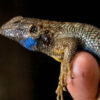Analyzing thousands of tissue samples from surgical procedures carried out around the United Kingdom (UK), researchers have estimated that the number of people carrying variant Creutzfeldt-Jakob prions to be double previous estimates. Reported in the British Medical Journal, the survey is likely the most robust prevalence measure to date across a wide range of age […]









